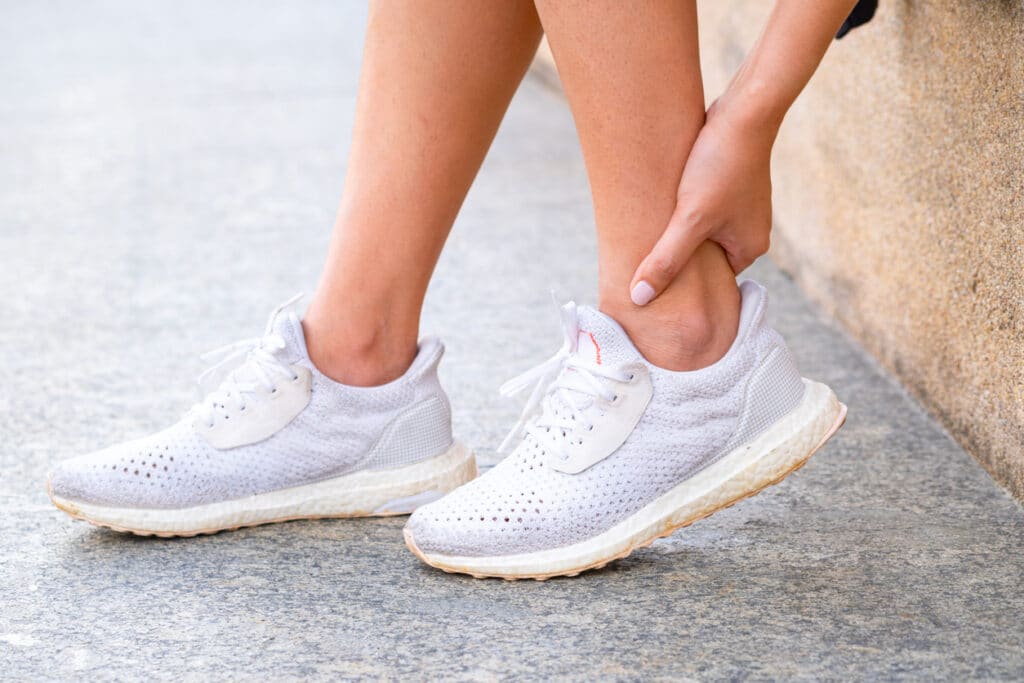
High ankle sprains are a common injury among athletes and fitness enthusiasts, but they can also happen to anyone during everyday activities. This type of ankle sprain affects the ligaments that connect the two leg bones, and recovery can take weeks or even months. Many people wonder do high ankle sprains go away on their own, but lasting recovery usually depends on early treatment and consistent rehabilitation. Recognizing high ankle sprain symptoms early can make a major difference in how effectively you heal, as timely intervention helps reduce swelling, maintain stability, and prevent complications that could prolong recovery. With the right exercises, you can speed up the healing process, improve joint stability, and reduce the risk of re-injury. In this guide, we’ll cover some of the most effective exercises for high ankle sprains, recommended by kinesiologists, fitness trainers, and physiotherapists.
Range of Motion (ROM) Exercises: ROM exercises are gentle movements that improve flexibility and mobility without causing pain or stress. Start with ankle circles, where you rotate your foot clockwise and counterclockwise in a seated or standing position. Next, try dorsiflexion and plantar flexion exercises, which involve pointing your toes up and down while keeping your heel on the ground or elevated on a step. These exercises improve ankle joint mechanics and reduce stiffness.
Strengthening Exercises: Once you have regained some mobility, it’s time to start strengthening the muscles around your ankle. The most important ones are the calf muscles, anterior and posterior tibialis, and peroneals. Exercises like calf raises, single-leg balance, heel taps, and resisted ankle dorsiflexion can help activate these muscles, improve their endurance and power, and reduce the risk of future sprains.
Proprioceptive Exercises: Proprioception refers to the ability to sense and control your body position and movements. Proprioceptive exercises help your brain and muscles coordinate better and improve your balance and stability. Examples of such exercises include standing on one leg with your eyes closed, walking on uneven surfaces, doing lateral hops, and using wobble boards or balance discs.
Plyometric Exercises: Plyometrics are explosive and high-impact exercises that aim to improve lower-body power and agility. While you should avoid them during the acute phase of your injury, once you’re ready, they can be an excellent way to challenge your ankle and strengthen it further. Plyometric exercises for high ankle sprains can include jump squats, box jumps, lateral bounds, and agility ladder drills.
Functional Exercises: Finally, functional exercises are movements that mimic daily activities or sports-specific motions. They can help you integrate your newly acquired ankle strength and control into real-life situations. Examples of such exercises include lunges, squats, step-ups, jumping jacks, or lateral shuffling. You can modify them by using resistance bands, weights, or unstable surfaces.
High ankle sprains can be frustrating and limiting, but staying active in the right ways makes recovery smoother and more sustainable. Along with exercise, nutrition also plays a crucial role — steering clear of foods that can slow recovery from high ankle sprains by increasing inflammation can help your body heal more efficiently and maintain overall joint health. Always consult with a kinesiologist, fitness trainer, or physiotherapist to tailor your plan safely and effectively. With patience, consistency, and proper guidance, you can restore strength, mobility, and confidence in your ankle.
If you have any questions or would like to explore further, please book a free, no-charge online appointment with either myself, Evelyn Merriman, BKin, RKin, or another Kitchener kinesiologist at CARESPACE. We are happy to listen and are here to help!
Taking steps toward recovery starts with recognizing the signs early—more on this in our High Ankle Sprain page.




